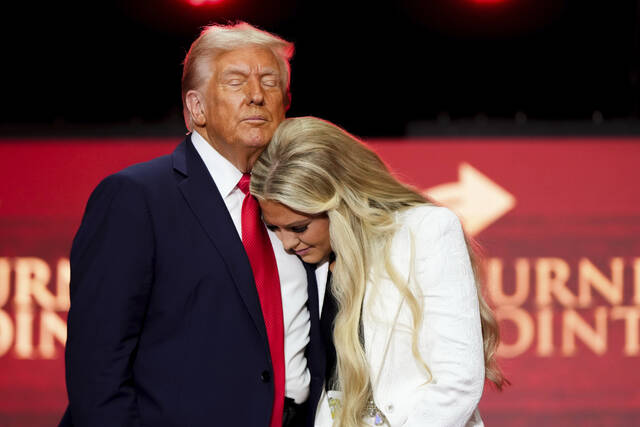Joseph Sabino Mistick: What can we do in the face of hate? Look to Roosevelt.
According to a recent report by the Southern Poverty Law Center, the number of hate groups in America has declined, but the influence of those that remain continues to grow. It seems that hate is more openly popular than ever, and no one has shown that better than President Donald Trump.
At the September memorial service for ultra-conservative influencer Charlie Kirk, Kirk’s widow, Erika, said “the answer to hate is not hate.” Kirk had been killed by a sniper as he addressed a group of college students in Utah, and his widow was extraordinarily forgiving as she addressed the group.
But Trump, who did not miss the chance to reject any notion of forgiveness, responded, “That’s where I disagreed with Charlie. I hate my opponent and I don’t want the best for them. I’m sorry.”
In normal times, that might have been followed with an explanation that the president misspoke because of the wrenching emotion he felt for his fallen friend. But those times have passed.
During a press briefing, Trump’s press secretary Karoline Leavitt did not back away from Trump’s words, saying instead, “Look, the president is authentically himself. I think that’s why millions of Americans across the country love him and support him.”
If it’s OK for Trump to hate his opponent, it doesn’t take much for his supporters to decide that it’s OK for them to hate their opponents, too. And the notion of being hated, especially by your president, is enough to drive some patriotic Americans into the shadows and away from public debate.
So what does an average citizen — especially an average Democrat — do with all that hate?
President Franklin Delano Roosevelt had the right response, and he laid it out in his Madison Square Garden speech three days before his 1936 landslide reelection.
Speaking about those who were fighting his “New Deal” agenda to “restore democracy” by dealing with the causes of the Great Depression, Roosevelt said, “They are unanimous in their hate for me — and I welcome their hatred.”
Instead of hiding from the hate aimed at him by his powerful enemies — “business and financial monopoly, speculation, reckless banking, class antagonism, sectionalism” — Roosevelt drew strength from it.
In a recent article called “What the British Left Can Learn From FDR” in the British newspaper The Telegraph, Phil Tinline said that Roosevelt’s “constructive Left-populism” is how to confront “the way elites dominate through money and the way they guard the status quo through rules.”
And it could be time for FDR’s populism to make a comeback here — as more farms fail and farmers throw in the towel because of tariffs, as millions of Americans lose their health care, as small hospitals begin to close, especially in rural areas, as jobs continue to go away, as Americans see the value of their savings shrink, as the cost of groceries rises.
FDR closed his Madison Square Garden speech with a call to service that is quaint when compared to today’s political bombast. But it is just as necessary now as then, regardless of your party or beliefs.
“Above our political forums, above our marketplaces, stand the altars of our faith — altars on which burn the fires of devotion that maintain all that is best in us and all that is best in our Nation.”
As Roosevelt proved, democracies can deal with the most difficult things society can encounter. The system that was defined by our founders — fair debate, discussion and elections — is still the best. Withdrawal in the face of hate is not the answer.
Joseph Sabino Mistick can be reached at misticklaw@gmail.com.
Remove the ads from your TribLIVE reading experience but still support the journalists who create the content with TribLIVE Ad-Free.

